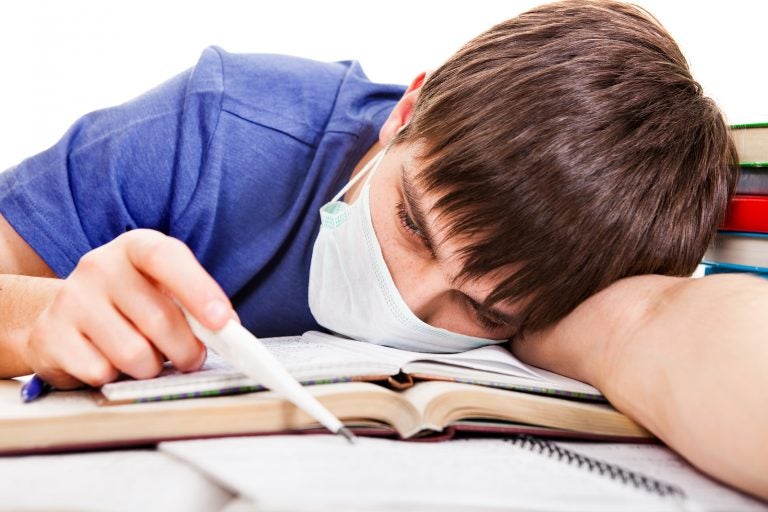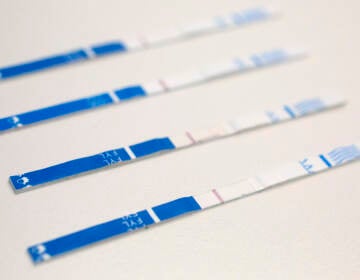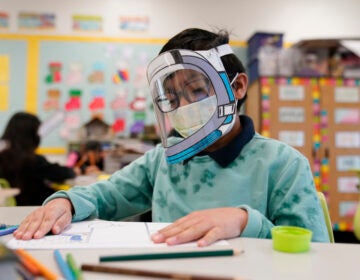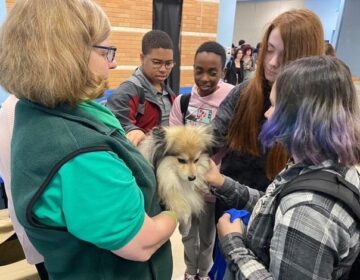Sending ‘sick’ kids to school is the new normal
In the face of ringworm, scabies — even lice — keeping kids in class is a priority.
Listen 6:06
Kumiko Kawasaki may never really know where exactly it happened — maybe on her kids’ favorite playground in Berkeley, California, or maybe at school —but somewhere along the way, her two children caught hand, foot and mouth disease. Three times.
Hand, foot and mouth disease is a nasty-sounding virus, but it’s actually pretty common, especially among young children.
“My older son actually had [hand, foot and mouth disease] twice, and then my younger son had it once’” Kawasaki said. “So I was pretty familiar with how his symptoms got developed. You know, the fever, the bruises, that kind of thing.”
Over the past five years, Kawasaki missed so much work to take care of her children when they were out sick, she had to quit her job as a social worker and find more flexible part-time employment.
This spring, she got a call from the preschool … again. Her 2-year-old was one of several new cases of hand, foot and mouth disease in the class.
She picked him up, but, back at home, she didn’t see any symptoms. So, the next day, her husband brought their son back to school.
“He was asked if we took him to the doctor and got the clearance,” she said. “Then another teacher, another day asked him the same question.”
The couple were following school policy. Their son was symptom free for 24 hours, and his fever was under 100 degrees. Still, despite the official protocol, the teachers were nervous. Kawasaki said they felt pressure to take their son out of school.
But, according to pediatrician Dean Blumberg, keeping a kid home for a few days for hand, foot and mouth disease doesn’t help much to prevent its spread.
“Even after they recover, the virus can still be found for up to six weeks in their nasal secretions and for several months in their gastrointestinal tract. And so it may be transmitted by asymptomatic children also,” Blumberg said.
The skin rash, fever and blisters inside the mouth may be long gone, but the virus can still easily be passed on by kids playing in the same room. Blumberg, an infectious disease specialist, said you’d have to keep a child home for weeks, both before and after they had visible symptoms, to really make sure they didn’t infect anyone else. That’s not realistic for most working families.
In fact the the American Academy of Pediatrics, which Dean represents, recommends kids only be kept home for their own comfort. They offer similar advice for lots of illnesses, like pink eye, scabies and ringworm. “There’s really no study that has ever shown that excluding children who are ill decreases the rate of transmission and spread to others,” Blumberg said.
If your kid feels well enough to fully participate, they should probably be at school, he said. That’s a big change from a generation or two ago.
“The initial policy was based on more hypotheses, and so basically what people thought made sense,” explained Blumberg. “Lately it’s been a lot more evidence-based.”
No more “no-nits” policy
The new rules aren’t what mom Sara Kopp expected. Her family lives in Reno, Nevada and last year her 4th grader came home scratching her head.
Yes — head lice.
“My daughter has thick blonde hair, and we would do the shampoo and then have to sit there and pick all the bugs and the eggs,“ remembered Kopp. ”It was really, really time-consuming.”
She waited until there were no bugs or nits left and then sent her daughter back to school. But, by the end of the week, she had it again.
The lice kept coming back, over a period of eight or nine months.
“It was nonstop,” Kopp said. “I would just treat it, she would go to school, and it would happen again.”
She became convinced one of the other children in class was giving her daughter lice. And, she was shocked to find out that the Washoe County school district, where she lives, doesn’t require students with lice to stay out of school.
Kopp said that, back when she was little, kids were sent home immediately, and not allowed back until their heads were inspected by a school nurse.
“I remember when someone in our class would have head lice, we would all line up outside in the sun and the teachers and the school nurse would go through everybody’s hair to make sure everybody else was clear,” Kopp said.
Many districts still have that old-school “no-nits” policy, banning anyone with bugs or eggs in their hair. But pediatrician Dean Blumberg said it turns out lice is just not commonly transmitted in school settings and children.
“Once they get treated, they can go right back to school,” Blumberg advised.
But mom Sara Kopp was so frustrated she started an online petition and gathered 6,000 signatures. She wanted kids sent home until they were treated, or lice-free. The school district held firm. Their philosophy is that the need for kids to be in school outweighs any risks associated with lice.
Kopp considers herself a punk rock mom; her daughter eventually dyed her hair purple, which Kopp believes made the lice go away. (That’s a popular home remedy on the internet — but there’s no medical basis for the claim.)As for other parents wondering what they can do to keep their children from catching whatever’s going around? The doctor says the best method of prevention — no surprises here — is to teach them to wash their hands.
WHYY is your source for fact-based, in-depth journalism and information. As a nonprofit organization, we rely on financial support from readers like you. Please give today.






